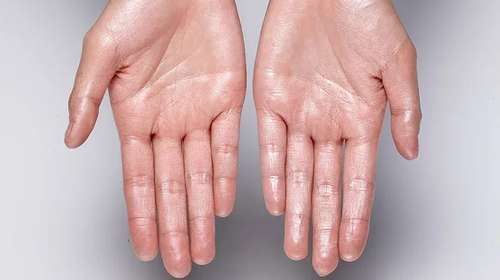
Multiple studies have shown that Nurse Practitioners (NPs) and Physician Assistants (PAs) play a vital role in the field of Dermatology. The importance of their contribution has increased massively in recent years.
In an interview with Derm for Primary Care’s Chief Medical Officer, David E Kent, MD, we talk about the current state of the field, the role of NPs and PAs, and the future of Dermatology in the United States.
DFPC: What does the current state of Dermatology look like?
David: The current state of Dermatology is very exciting and the future looks bright in so many areas. First, the management of chronic skin diseases such as atopic dermatitis and psoriasis; with new targeted therapies, we can provide patients stabilization of their symptomatic skin disease and in many cases complete clearance. Aesthetic options are available for patients to maintain, enhance, and restore a more youthful appearance to their skin and body contours using non-surgical options. Prevention of skin cancers in high-risk patient groups is much improved using nutritional supplements and retinoids.
DFPC: What is the current role of NPs and PAs?
David: The role of advanced practice providers - Nurse Practitioners and Physician Assistants is definitely increasing in Dermatology and for good reason. There is a definite shortage of dermatologists especially in rural areas in the U.S. Over 75 million people live in over 7500 areas designated as primary health professional shortage areas. And of these, approximately 65% of these shortage areas are in rural areas of our country.
Patients in need of dermatologic care are among those affected by these shortages, and the implications can be severe for patients with skin diseases, many of which are serious and can be life-threatening.
One interesting statistic shows more than 25 percent of the US population sought treatment for at least one skin disease in 2013, according to data from the American Academy of Dermatology’s Burden of Skin Disease report. In fact, in the same study, researchers found skin disease - which ranges from psoriasis to skin cancer to extremely rare and debilitating conditions - to be more common than cardiovascular disease and diabetes.
When one looks at who takes care of patients with skin diseases in our country, dermatologists manage only 40%. The rest is taken care of by non-dermatology physicians and advanced practice providers (NPs and PAs).
NPs and PAs are providing an increasing amount of dermatologic care and rightfully so. There is a shortage of dermatologists, and potential roadblocks in referring patients to a dermatologist are many. These include: distance and financial hardships to see specialists with additional copays, as well as indigent patients who have Medicaid or receive care through federally qualified healthcare centers
Benefits to patients when NPs and PAs provide dermatologic care within their current practices include their ability to stay with the provider they know best, reduced financial burden, and a chance for referral failure due to excessive wait times for appointments.
DFPC: What is the role of NPs and PAs in a dermatology care team? What does a care team look like in 10 years?
David: The dermatology care team has fortunately evolved to include dermatologists, NPs, and PAs.
The structure of dermatology teams may vary depending upon several factors:
1st- Location: in metropolitan and urban areas, NPs and PAs may work directly with dermatologists in managing chronic skin diseases, skin cancer screenings, participating in clinical studies, following their own patients in a clinic, as well as perform aesthetic services.
In non-urban settings, NPs and PAs who work with dermatologists often follow their patients. Patients are seen with the dermatologists who present challenging diagnostic skin findings, management of skin cancers, and when patients don’t improve.
NPs and PAs also see patients with their dermatologist for management of chronic diseases such as psoriasis and atopic dermatitis. Often treatment algorithms are established to improve patient outcomes.
While it is difficult to predict what the future will look like, I expect that both nurse practitioners and physician assistants will play a greater role in direct dermatology patient care. This is due in great part to the shortage and demand for dermatology services nationwide.
DFPC: How can we ensure adequate numbers of NPs and PAs are trained and enter the field?
David: Successful education and training in dermatology require NPs and PAs to examine countless patients to develop diagnostic skills of dermatologic signs and disease patterns. These include lesion distribution, primary lesions, secondary lesions, and rash or lesion description. Unfortunately, a brief rotation through a skin clinic is likely to result in gaps in an NP’s or PA’s fund of knowledge.
Additionally, the Coronavirus epidemic has strained and reduced clinical opportunities to receive this training. Textbooks can be somewhat helpful. However, the lack of professional interaction focusing on important educational points to differentiate between rashes that look alike, or benign from malignant skin lesions is absent.
Interactive educational opportunities either in person or distance learning through innovative opportunities will accelerate and improve student learning and improve patient outcomes.
As a board-certified dermatologist in practice for over 33 years, I am excited to work with a team of dermatologists, nurse practitioners, and physician assistants. Realizing that dermatologists only provide 30-40% of the dermatology care provided in the US, it is essential to educate and train advanced practice providers to help meet this challenge. This will directly improve patient outcomes especially those who do not have easy access to dermatologic care. I think a sense of competition between dermatologists and NPs and PAs is misplaced when it comes to the management of common dermatologic problems.
Image Credit: Cover Image













